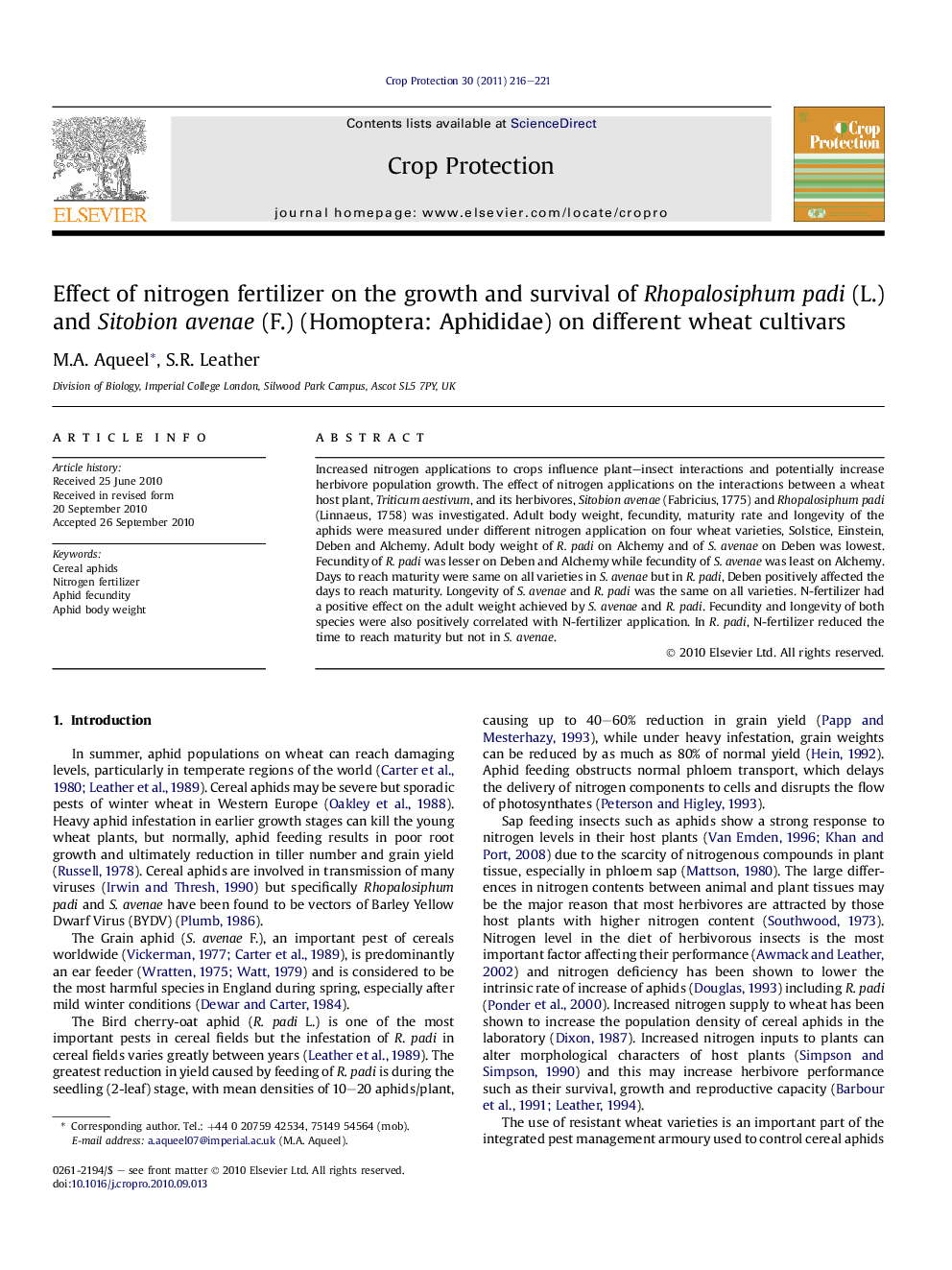| Article ID | Journal | Published Year | Pages | File Type |
|---|---|---|---|---|
| 4506659 | Crop Protection | 2011 | 6 Pages |
Increased nitrogen applications to crops influence plant–insect interactions and potentially increase herbivore population growth. The effect of nitrogen applications on the interactions between a wheat host plant, Triticum aestivum, and its herbivores, Sitobion avenae (Fabricius, 1775) and Rhopalosiphum padi (Linnaeus, 1758) was investigated. Adult body weight, fecundity, maturity rate and longevity of the aphids were measured under different nitrogen application on four wheat varieties, Solstice, Einstein, Deben and Alchemy. Adult body weight of R. padi on Alchemy and of S. avenae on Deben was lowest. Fecundity of R. padi was lesser on Deben and Alchemy while fecundity of S. avenae was least on Alchemy. Days to reach maturity were same on all varieties in S. avenae but in R. padi, Deben positively affected the days to reach maturity. Longevity of S. avenae and R. padi was the same on all varieties. N-fertilizer had a positive effect on the adult weight achieved by S. avenae and R. padi. Fecundity and longevity of both species were also positively correlated with N-fertilizer application. In R. padi, N-fertilizer reduced the time to reach maturity but not in S. avenae.
Research highlights► The effects of wheat varieties and varying nitrogen fertilizer on the performance of two cereal aphids, Sitobion avenae (F.) and Rhopalosiphum padi (L.), were investigated. ► Higher nitrogen fertilizer increased aphid population density by increasing longevity and fecundity and by decreasing the time to maturity. ► Aphids were healthier and more fecund when feeding on good milling wheat varieties. ► Although the experiment was conducted in controlled conditions, the results could be used to forecast the performance of the cereal aphids in field conditions.
